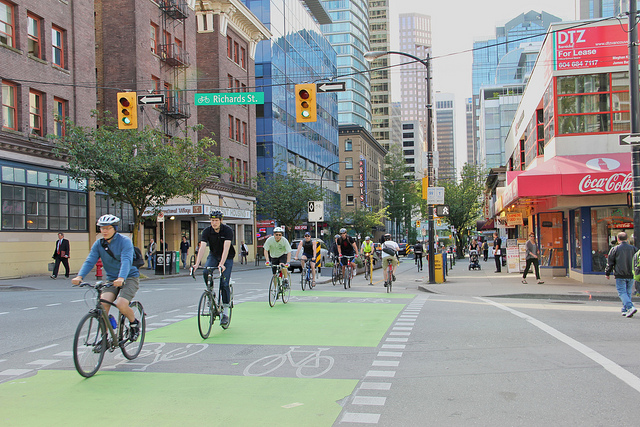The tipping point for cities likely went unnoticed. It could have been a baby born in a large hospital in Lagos. It might have been a Chinese farmer moving to Shanghai. Or perhaps it was the quiet passing of a grandparent in the Amazon.
Whatever it was, the result was dramatic. In 2009 and for the first time in history, more people lived inside urban areas than outside of them. Where are we five years later?
First, cities are becoming more ambitious when it comes to solving problems. Mayors and city councils worldwide are doing more to tackle big challenges, including those traditionally associated with higher levels of government. In London, there are Boris bikes and congestion charges to address traffic snarls and loss of economic productivity. The City of New York is using walkable public spaces and regulated soft drink serving sizes to improve public health.
Second, cites are starting to fill the void brought about by diplomatic stasis. As emerging countries demand an increasing share of power statecraft, the nation-states of the world are struggling to reach agreement on key global challenges. Efforts to modernize multilateral institutions to take account of shifts in political realities have stalled. The United Nations has spent decades haggling over reform of the Security Council, to no avail.
When international organizations operate on a consensus basis, as does the World Trade Organization, agreement can be elusive. In 2001, the Doha Development Round was launched with the objective of lowering tariffs, particularly for agricultural products from poorer countries. Over 12 years later, negotiators in Geneva have little to show for their efforts.
Many cities have signalled they’re not prepared to await the outcomes of glacial international negotiations. The climate change file provides a great example. In 2009 at the Copenhagen Climate Conference, a last-minute deal — stitched together when President Barack Obama famously barged into a meeting of the major developing countries — failed to include binding emission reductions. Five years later, there is still no successor agreement to the Kyoto Protocol. A report from the International Panel on Climate Change reminds us that further dithering will be very costly.
And yet, despite the stalemate at the international level, over 1,000 U.S. mayors have committed to reduce greenhouse gas emissions by seven per cent below their 1990 levels. Around the globe, a coalition called the C40 Cities Climate Leadership Group is leading a growing list of big cities taking active measures to reduce their carbon footprint.
Here in Canada, however, cities have not taken sufficient advantage of their growing clout and capacity to collectively solve problems. Although the mayors of the two dozen or so largest Canadian cities meet regularly under the umbrella of the Big City Mayors’ Caucus, their stated objective — “to discuss shared issues and to reinforce Federation of Canadian Municipalities’ policy and advocacy agenda set by the National Board of Directors” — does not inspire.
The Big City Mayors’ Caucus should initiate a pan-Canada municipal challenge to establish and meet goals to solve shared urban problems. The choice of problems could be crowdsourced by Canada’s city dwellers. The challenge should engage the public and result in friendly competition to achieve the objectives. The goals should be clear and easily communicated — bold but realistic.
Imagine setting targets across all cities in Canada on things like affordable housing and public transit growth. Such an approach would encourage civic pride, increase clarity of purpose and provide an opportunity to pilot and share innovative ideas.
Cities, more than other levels of government, tend toward practical, non-partisan approaches and a willingness to experiment. Non-binding agreements among them could circumvent the blockages associated with provincial or diplomatic negotiations and turn intractable challenges into grassroots solutions. An interim date to measure progress could be Canada’s 150th birthday in 2017.
The trendlines are clear. By 2030, over 60 per cent of the human race will be urban. Canada reached that milestone half a century ago; we’re now past the 80 per cent point. Cities are showing an impressive capacity to solve problems together where nation states have come up short. Now’s the time for Canadian cities to embrace more ambitious — and collective — local solutions to global challenges.
Tobi Nussbaum is a former Canadian diplomat on leave from the Department of Foreign Affairs, Trade and Development. He is running for Ottawa City Council in the Ontario municipal elections in October. Follow him on Twitter at @tobi_nussbaum
This article is reprinted with permission from iPolitics ![]()
Photo: flickr/Paul Krueger



